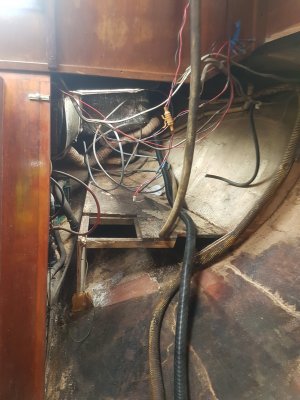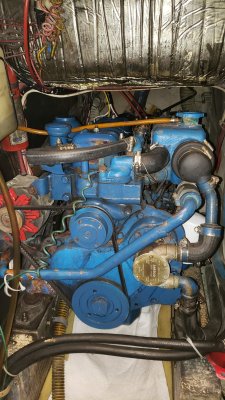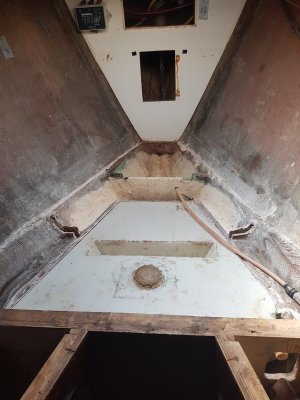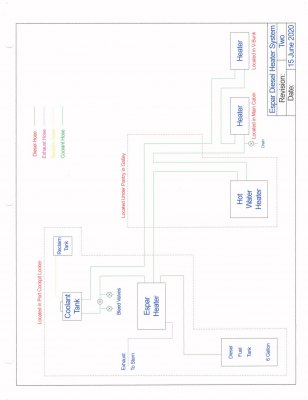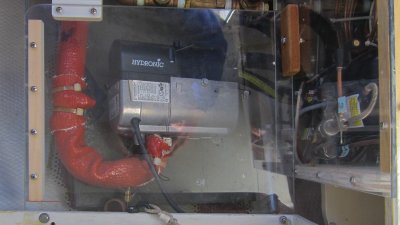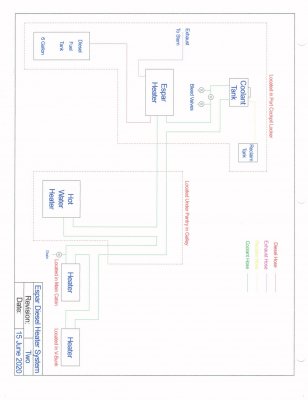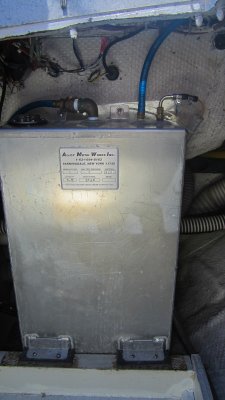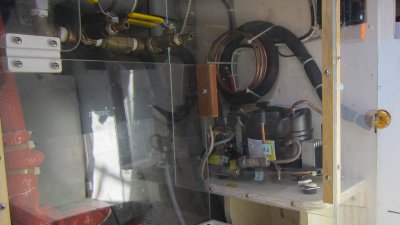Dave and Petra
New Member
Hi All,
My first post here. Thanks for having me.
My girlfriend and I have recently acquired a 1982 Morgan 383. She's in rough shape ( the Morgan 383... not my girlfriend.)
Termites have been at work for a long time, and if it's made of plywood, it's toast. These little critters are savage.
We are removing the insides down to the fibreglass. Half way there. Should be done excavating in a couple of weeks.
On a personal note, both my girlfriend and I are singlehanders with multiple transat passages. Petra sails her 1981 Malo 116 and I sail a 2000 leopard 38 catamaran. Our new to us Morgan is our joint project.
We are both pretty handy with tools and boat repair and maintenance. Replacing bulkheads, high quality woodwork, repowering etc. are all within our skillsets.
With that said, along the way we will have some specific questions that I hope you folks will answer.
First question is Perkins specific: I am removing the water heater. Do the coolant lines get attached together to form a closed loop, or simply plugged ? (I did this on my yanmar 3jh5e and the answer was plugged. Perkins I don't know...)
My first post here. Thanks for having me.
My girlfriend and I have recently acquired a 1982 Morgan 383. She's in rough shape ( the Morgan 383... not my girlfriend.)
Termites have been at work for a long time, and if it's made of plywood, it's toast. These little critters are savage.
We are removing the insides down to the fibreglass. Half way there. Should be done excavating in a couple of weeks.
On a personal note, both my girlfriend and I are singlehanders with multiple transat passages. Petra sails her 1981 Malo 116 and I sail a 2000 leopard 38 catamaran. Our new to us Morgan is our joint project.
We are both pretty handy with tools and boat repair and maintenance. Replacing bulkheads, high quality woodwork, repowering etc. are all within our skillsets.
With that said, along the way we will have some specific questions that I hope you folks will answer.
First question is Perkins specific: I am removing the water heater. Do the coolant lines get attached together to form a closed loop, or simply plugged ? (I did this on my yanmar 3jh5e and the answer was plugged. Perkins I don't know...)


